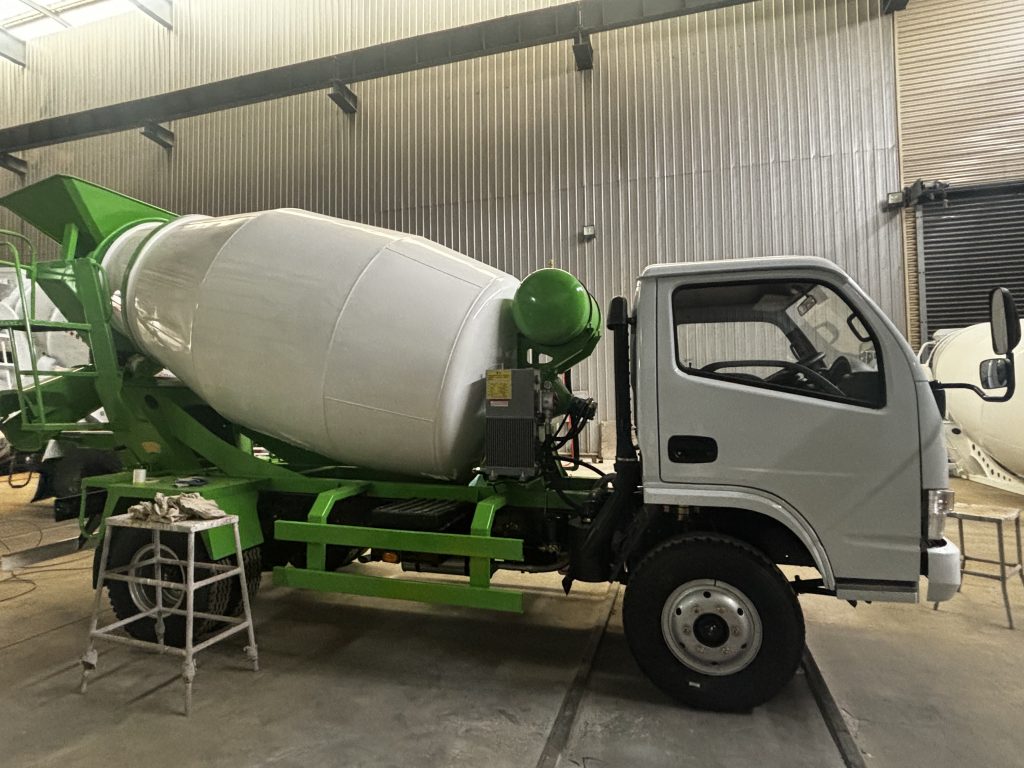Concrete mixer trucks: the “flowing blood” of construction projects
I. Development history: the leap from manual to intelligent
The birth of concrete mixer trucks is closely related to the process of construction industrialization. In 1900, T.L. Smith developed the first double-cone tilting concrete mixer, laying the foundation for mechanized production. In 1934, German engineer Friedrich Wilhelm Schwing founded Schwing and launched the world’s first batch of concrete mixers. In 1958, Schwing designed the world’s first concrete mixer truck based on a truck chassis, realizing the short-distance transportation of premixed concrete, marking the beginning of the era of concrete machinery segmentation.
China’s research and development began in 1966, and early on it relied on imported technology. In 1984, by introducing and digesting foreign technology, domestic companies gradually mastered core manufacturing capabilities. In 2007, China’s annual production of mixer trucks exceeded 16,000 units, not only meeting local demand, but also exporting in batches to the international market. Today, companies such as Zoomlion and Sany Heavy Industry have become global industry leaders, promoting technology upgrades towards intelligence and lightweight.
2. Core structure: precision design with integrated functions
Concrete mixer trucks are composed of automobile chassis and special devices. The core components include:
Mixer drum: pear-shaped structure with built-in double helical blades, forward mixing and reverse unloading, with a residual rate of less than 1%;
Hydraulic transmission system: the engine drives the hydraulic pump, and the mixing drum speed is controlled by the planetary reducer to ensure transportation stability;
Water supply system: equipped with pressure water tank and cleaning nozzle, which can adjust the concrete consistency and realize tank cleaning;
Intelligent control system: integrated with Internet of Vehicles technology, real-time monitoring of vehicle status, fuel consumption and unloading data.
3. Classification system: application segmentation under multi-dimensional standards
1. Classification by capacity
Light (below 2.5m³): ordinary truck chassis modification, suitable for small construction sites;
Medium (4-6m³): heavy truck chassis, meeting the needs of municipal engineering;
Large (above 8m³): three-axle or four-axle chassis, commonly used in bridges and high-rise buildings.
2. By transmission mode
Mechanical transmission: simple structure but large mass, gradually eliminated;
Hydraulic transmission: high degree of standardization, flexible layout, occupying the mainstream of the market.
3. By operation mode
Wet material transportation: loading premixed concrete, transportation time ≤1.5 hours;
Dry material/semi-dry material transportation: adding water and mixing on site during long-distance transportation to meet long-distance needs.
4. By mixing principle
Free-fall type: blades lift materials for free fall mixing, suitable for plastic concrete;
Forced type: rotating shaft blades force mixing, high efficiency, suitable for dry hard concrete.
4. Application scenarios: “main force” of infrastructure construction
Construction: ensure the continuity of concrete pouring and reduce on-site pollution;
Roads and bridges: long-distance transportation of high-grade concrete to meet special structural requirements;
Nuclear power projects: special models are equipped with radiation protection coatings to ensure safe transportation;
Green construction: pure electric mixer trucks reduce carbon emissions. 150 vehicles have been put into operation during the Hangzhou Asian Games, reducing emissions by more than 1,000 tons per year.
5. Technological innovation: intelligence and greening in parallel
Lightweight design: high-strength steel and optimized structure are used, the weight of the four-axle model is reduced to 11.3 tons, and fuel consumption is reduced by 8%;
New energy transformation: Zoomlion has launched hybrid and pure electric models with a range of 160 kilometers and battery replacement in just 5 minutes;
Intelligent collaboration: dynamic scheduling is achieved through networking with pump trucks, and the error is controlled within ±5%;
Safety upgrade: equipped with four-way cameras, blind spot monitoring and emergency braking systems, the accident rate is reduced by 30%.
6. Future Outlook: Sustainable Development Drives Innovation
With the advancement of the “dual carbon” goals, concrete mixer trucks will accelerate their transformation to zero emissions. It is expected that by 2030, the proportion of new energy models will exceed 40%. At the same time, innovations such as AI algorithm optimization of mixing paths and blockchain technology to trace concrete quality will reshape the industry ecology.
In the wave of urbanization and infrastructure upgrades, concrete mixer trucks are transforming from traditional tools to the core nodes of smart construction, using technological iteration to drive the construction industry into a new era of higher efficiency and lower energy consumption.

